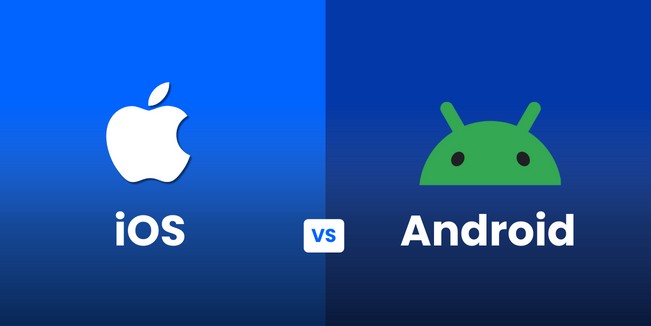
Choosing between Android and iOS devices is no longer just a matter of brand loyalty or aesthetics—it’s a strategic decision that can influence productivity, connectivity, and even long-term business outcomes. Both platforms have matured significantly over the years, offering robust ecosystems, sleek hardware, and powerful features. Yet, the differences in philosophy, customization, integration, and user experience remain distinct enough to warrant careful consideration. For professionals and organizations alike, understanding these nuances is key to making a choice that aligns with personal preferences and operational needs.
One of the most noticeable distinctions lies in the degree of customization. Android, by design, offers a more open environment. Users can tweak their home screens, install third-party apps from outside the official store, and even change default applications for tasks like messaging or browsing. This flexibility appeals to those who value control and personalization. For example, a business user might prefer an Android device that allows them to install specialized productivity tools or configure their interface to prioritize work-related functions. On the other hand, iOS maintains a more curated and consistent experience. Apple’s tight control over its ecosystem ensures that apps behave predictably, updates roll out uniformly, and the overall user interface remains polished and intuitive. This consistency can be a major advantage for teams that prioritize simplicity and reliability over granular control.
Security is another critical factor, especially in enterprise environments. Apple’s closed ecosystem and rigorous app review process have earned it a reputation for strong security. Features like end-to-end encryption in iMessage and FaceTime, biometric authentication, and frequent software updates contribute to a secure user experience. For organizations handling sensitive data or operating in regulated industries, iOS may offer peace of mind. That said, Android has made significant strides in recent years. Google has introduced robust security features, including sandboxing, monthly security patches, and enterprise-grade management tools. The challenge with Android lies in fragmentation—different manufacturers may delay updates or implement their own security protocols, which can complicate uniform protection across devices.
Integration with other devices and services also plays a role in the decision-making process. Apple’s ecosystem is famously cohesive. iPhones work seamlessly with Macs, iPads, Apple Watches, and even AirPods, creating a unified experience that enhances productivity and convenience. Features like Handoff, AirDrop, and Universal Clipboard allow users to transition between devices effortlessly. For professionals already invested in Apple hardware, sticking with iOS often makes sense. Android, while more diverse, offers its own strengths. Google’s ecosystem integrates well with services like Gmail, Google Drive, and Google Workspace, which are widely used in business settings. Moreover, Android’s compatibility with a broader range of hardware—from smartwatches to smart TVs—can be advantageous for users who prefer a more modular approach.
App availability and quality are often cited as deciding factors, though the gap has narrowed considerably. Most major apps are available on both platforms, but developers often release updates or new features on iOS first due to its uniform hardware and user base. This can be relevant for professionals who rely on cutting-edge tools or industry-specific applications. However, Android’s open nature allows for more experimental and niche apps, which can be valuable in specialized fields. The key is to evaluate which apps are mission-critical and how they perform on each platform. For instance, a graphic designer might prioritize iOS for its optimized creative apps, while a field technician might lean toward Android for its rugged device options and custom software capabilities.
Cost and device variety are practical considerations that shouldn’t be overlooked. Apple’s lineup is relatively streamlined, with premium pricing that reflects its brand positioning and build quality. While this appeals to users seeking a high-end experience, it may be prohibitive for organizations deploying devices at scale. Android, by contrast, spans a wide spectrum—from budget-friendly models to flagship devices that rival or exceed Apple’s offerings in certain areas. This diversity allows businesses to tailor their device strategy based on budget, use case, and performance requirements. A startup might opt for mid-range Android phones to equip its team affordably, while a law firm might choose iPhones for their security and client-facing polish.
Support and longevity also factor into the equation. Apple typically supports its devices with software updates for five years or more, ensuring that users benefit from the latest features and security patches. This long-term support can extend the usable life of a device, offering better value over time. Android’s update cycle varies by manufacturer, with some brands offering only two or three years of support. However, Google’s Pixel line and select enterprise-focused models have improved in this regard, offering more consistent updates and support. For businesses managing device fleets, these differences can influence total cost of ownership and IT planning.
Ultimately, the choice between Android and iOS comes down to priorities. If seamless integration, consistent updates, and a polished user experience are paramount, iOS may be the better fit. If flexibility, device variety, and customization are more important, Android offers compelling advantages. The decision isn’t binary—it’s contextual. Some organizations even adopt a mixed-device strategy, allowing employees to choose based on their roles and preferences. What matters most is aligning the platform with the goals, workflows, and values of the user or business. In a world where mobile technology drives communication, collaboration, and innovation, choosing the right device is more than a technical decision—it’s a strategic one.